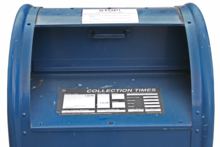Marketing Guides
Campaigns & Execution
How to Maximize Your Direct Mail Budget
 While many B to B marketers have moved their budgets from direct mail to email campaigns, I’m a huge fan of direct mail. I use it for lead generation, lead nurturing, and customer promotions, and my campaigns run from simple sales letters to creative pieces with sizzle.
While many B to B marketers have moved their budgets from direct mail to email campaigns, I’m a huge fan of direct mail. I use it for lead generation, lead nurturing, and customer promotions, and my campaigns run from simple sales letters to creative pieces with sizzle.
A key challenge in making direct mail work is cost:
- Targeted list
- Graphic design
- Paper, envelopes, supplies
- Printing & production
- Mail processing & fulfillment
- Postage
The brokers and vendors I work with on many projects will faint when they see this, but you can create a professional-looking piece in-house and save quite a bit of money versus outsourcing the entire job from start to finish.
To decide whether to send out the job or produce it in-house, get quotes from at least three vendors and then develop an estimate of what it will cost to produce in-house. This may take a little more time and effort on your part, but it’s a great exercise that can be applied to future campaigns as well – and when you save money on your campaign, you improve your ROI.
8 Steps to Maximize Your Direct Mail Budget
Here are additional tips to help you maximize your direct mail budget.
1. Can you design the piece in-house? If you have access to a graphic designer, freelancer or internal employee who can produce a print-ready file, you may be able to get your piece designed less expensively than if you use an agency. Direct mail firms and pros know how to design for maximum response, but if your piece is simple or you have a strong idea of what you need and how it should look, you can often save money in this area.
2. Consider buying equipment. You can buy letter folders, postage machines, laser and high quality inkjet printers on the web. For example, I worked for a non-profit that did all their mailings internally. They had the most unbelievable little mailroom with a deluxe letter folder, postage machine, high quality printer and those cool handheld sponge sealers. They probably did 15,000 pieces a year in direct mail, but they did very small runs of 50-100 per mailing and they often used a preprinted letterhead or template depending on the department. Because the equipment was a one-time purchase, the only line item cost they had per mailing campaign was the postage.
3. Do you have the resources to produce and mail the piece without grossly disrupting your business? If you can rally the troops and stuff envelopes for an hour, great. But as a rule of thumb, if it takes more than one person more than one day to produce the job, it’s probably best to send it out.
4. Break out the printing and mailing costs. If you’re working with a vendor who deals in both printing and mailing, ask them to bid the project elements separately. Then you can mix and match the vendors that are most cost-effective.
5. Know the cost of your paper. Typically, a printer won’t break out the cost of supplies (ink, paper, etc.) in a bid. If you have an idea of what the supplies cost wholesale or direct from the manufacturer, you’ll know how much of the estimate is the printer’s production cost — and if you can beat that cost by doing the project in-house. (This post offers some resources for finding paper and envelopes online.)
6. Calculate the real cost of your internal resources. Estimate the time each resource will devote to the project and the cost of those resources – and try to use a value figure, not just an hourly cost. For example, let’s say you pull a telemarketer off the phone to stuff envelopes for an hour. If he earns $10 an hour and typically generate $500 in revenue every four hours, you’re actually losing $125 ($500/4) per hour when he isn’t making calls. Use the value figure in your in-house cost estimate — it will help you better compare the true cost of insourcing rather than outsourcing.
7. Save on postage. Presorting the job can often qualify you for cheaper postage rates. Presorting is available for both First class and Standard mail classes. Keep in mind that you may need to bring in a specialized vendor to presort the mail, which could effect the processing costs. The USPS offers a decision tree to help guide you in what mail options are best.
8. Ask for a rebate. If you’re going do a lot of direct mail and need the expertise and resources of a vendor, negotiate a rebate program based on reaching certain volume levels over the course of a year.
Last but not least: ROI is more important than cost. Use these tips to help reduce your cost, but not at the expense of your response rate. You need a great strategy, targeted list and compelling message to produce the results you’ll need.
If you don’t already have a copy of Bob Bly’s excellent direct marketing books, here are two that are full of pointers and examples to help you improve your campaigns.
DIRECT MAIL PLANNING TEMPLATES / MARKETING PLANS / PROJECT MANAGEMENT
EVERYTHING YOU NEED FOR YOUR DIRECT MAIL PROJECT